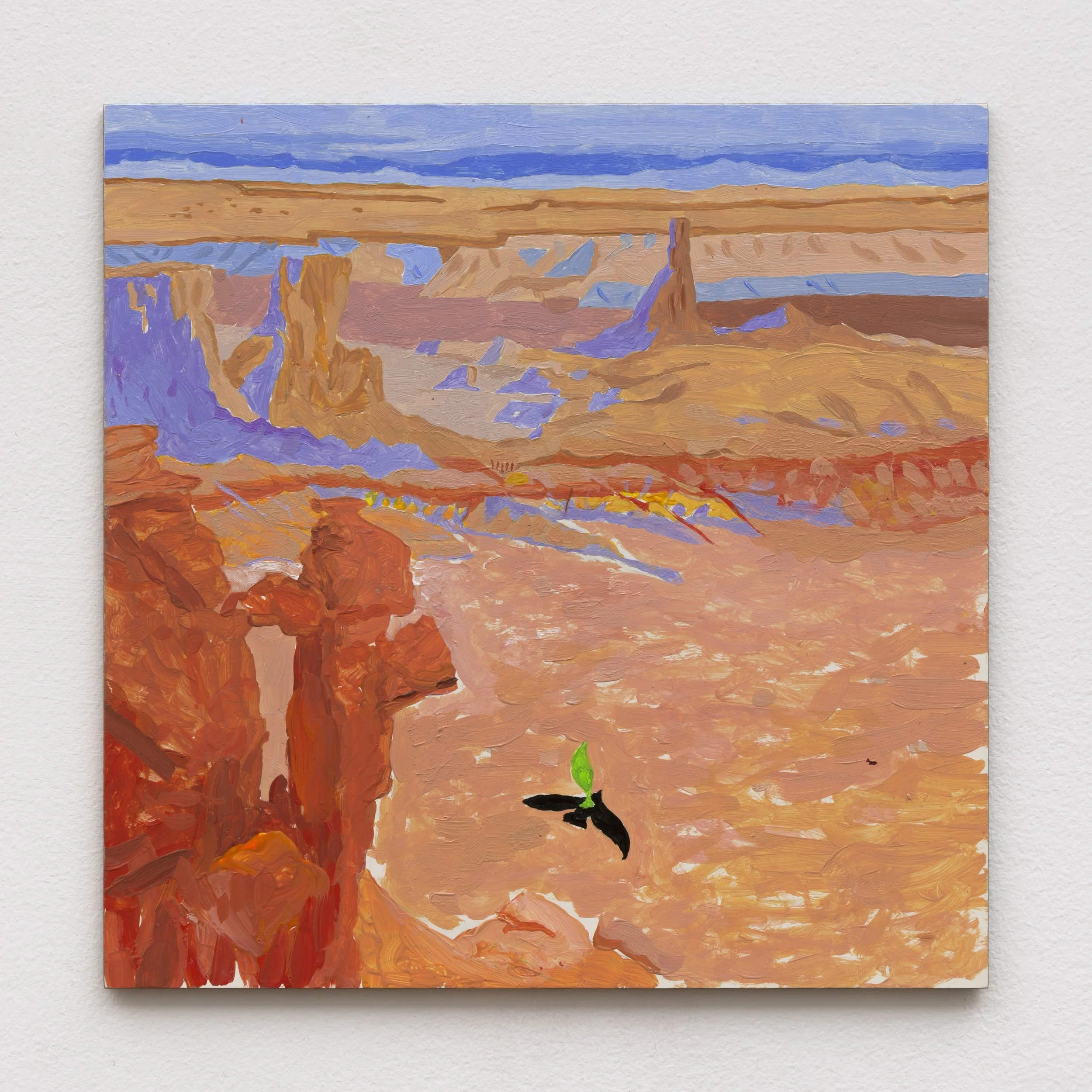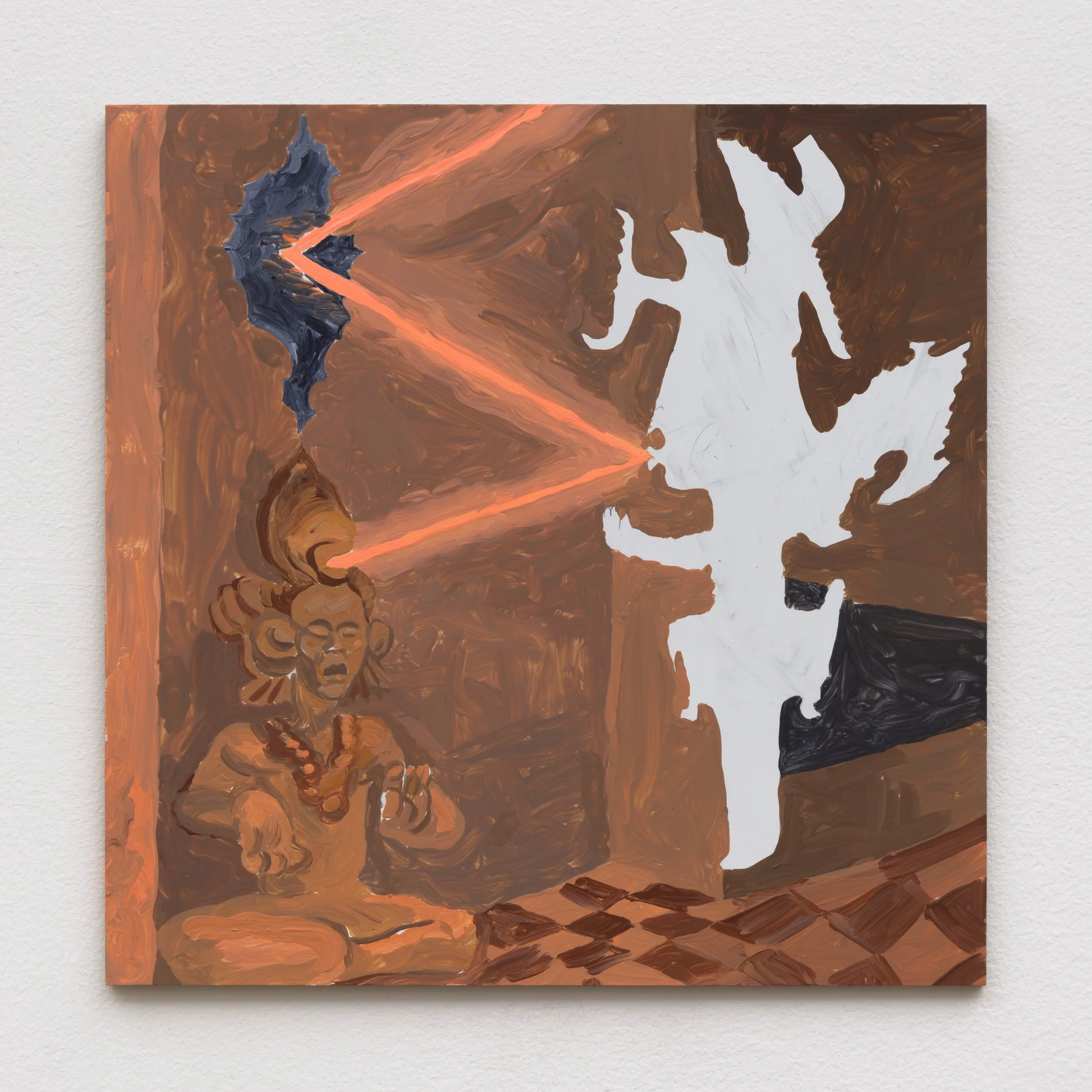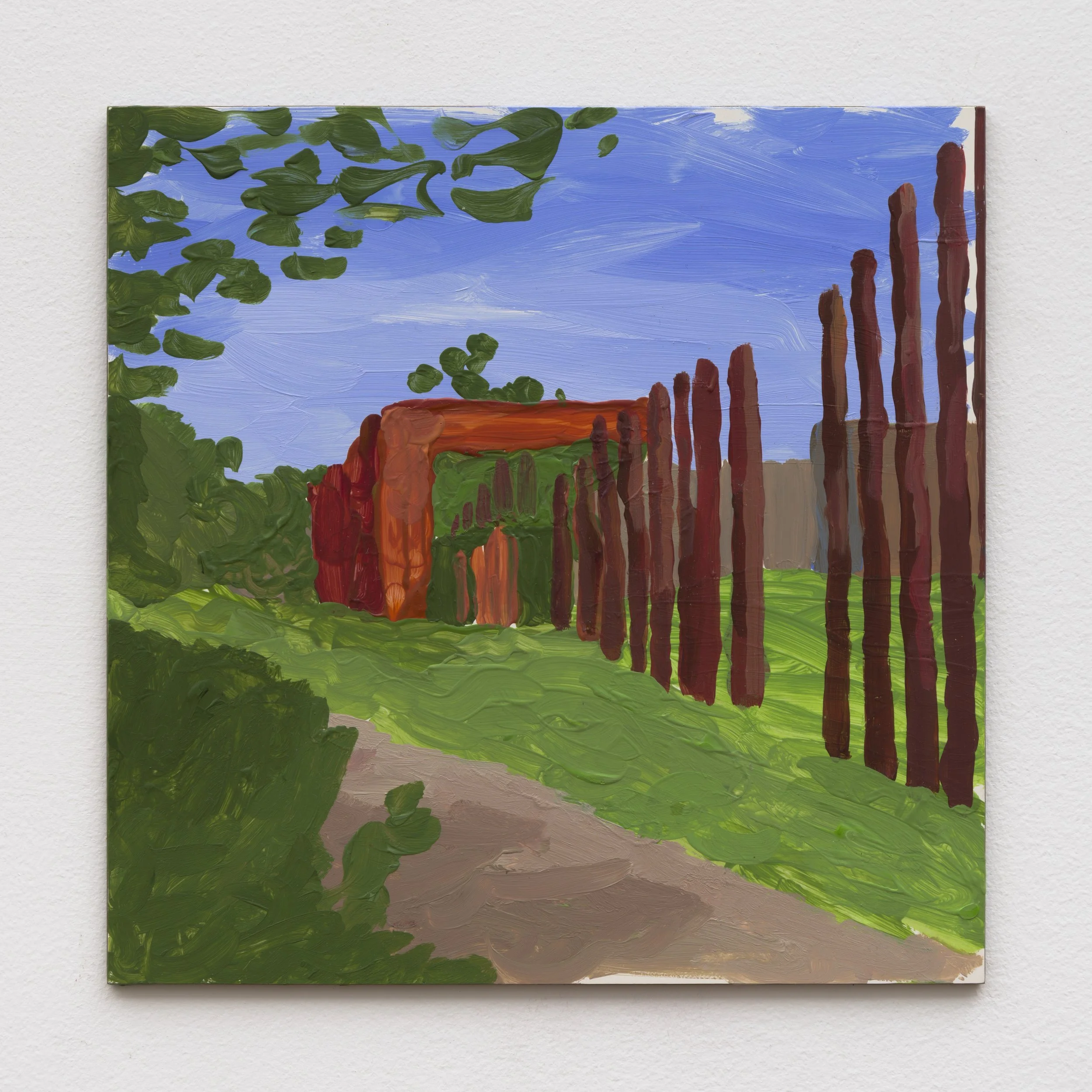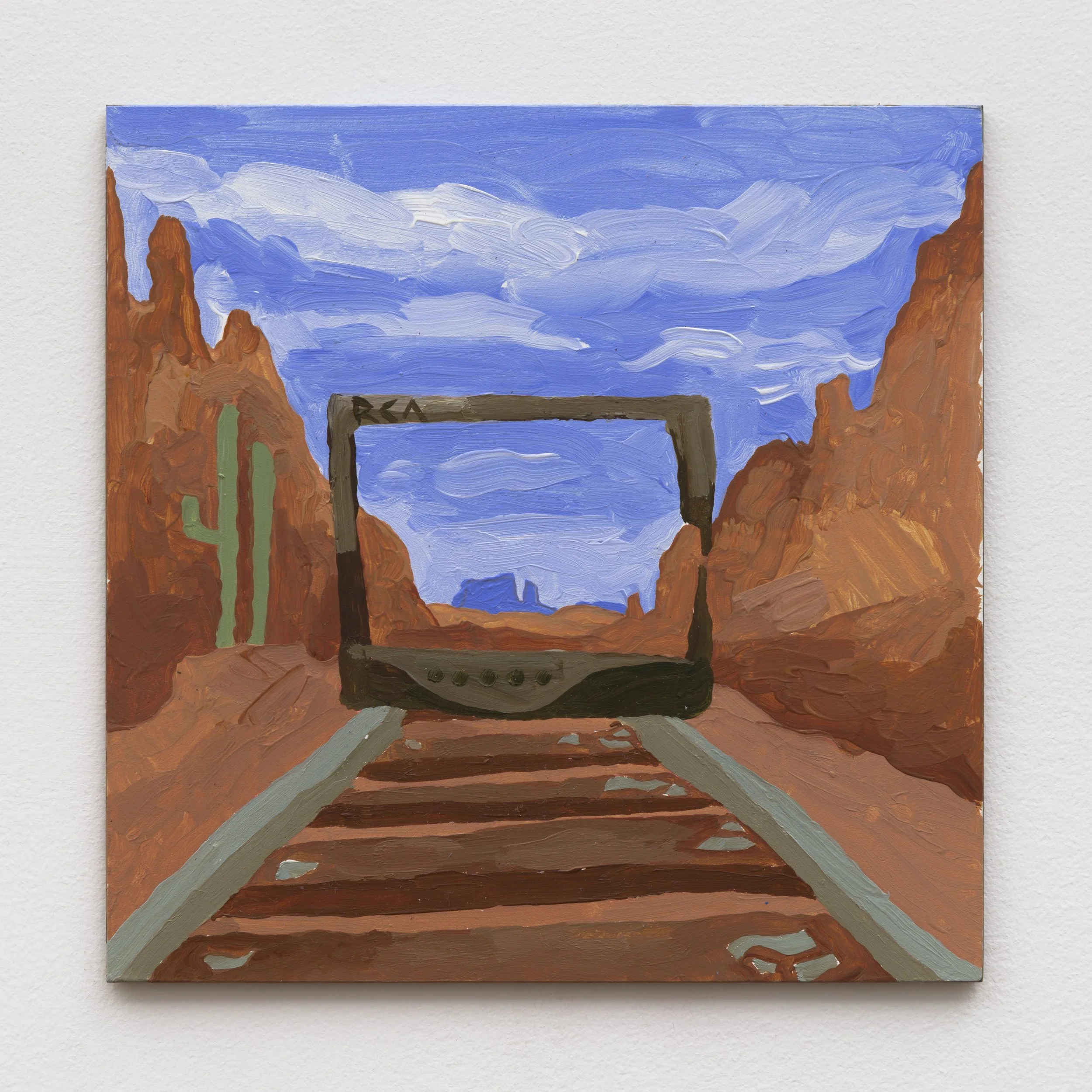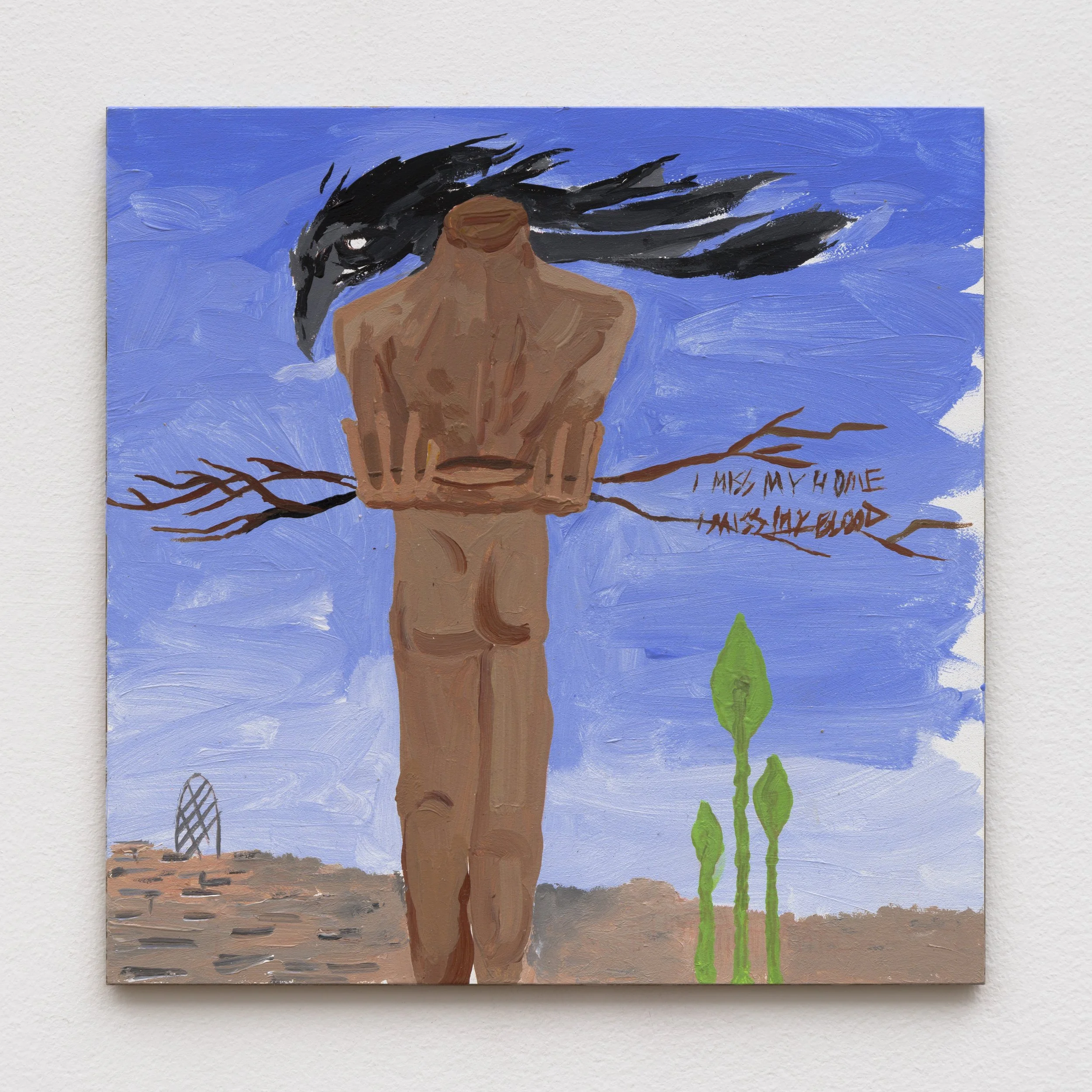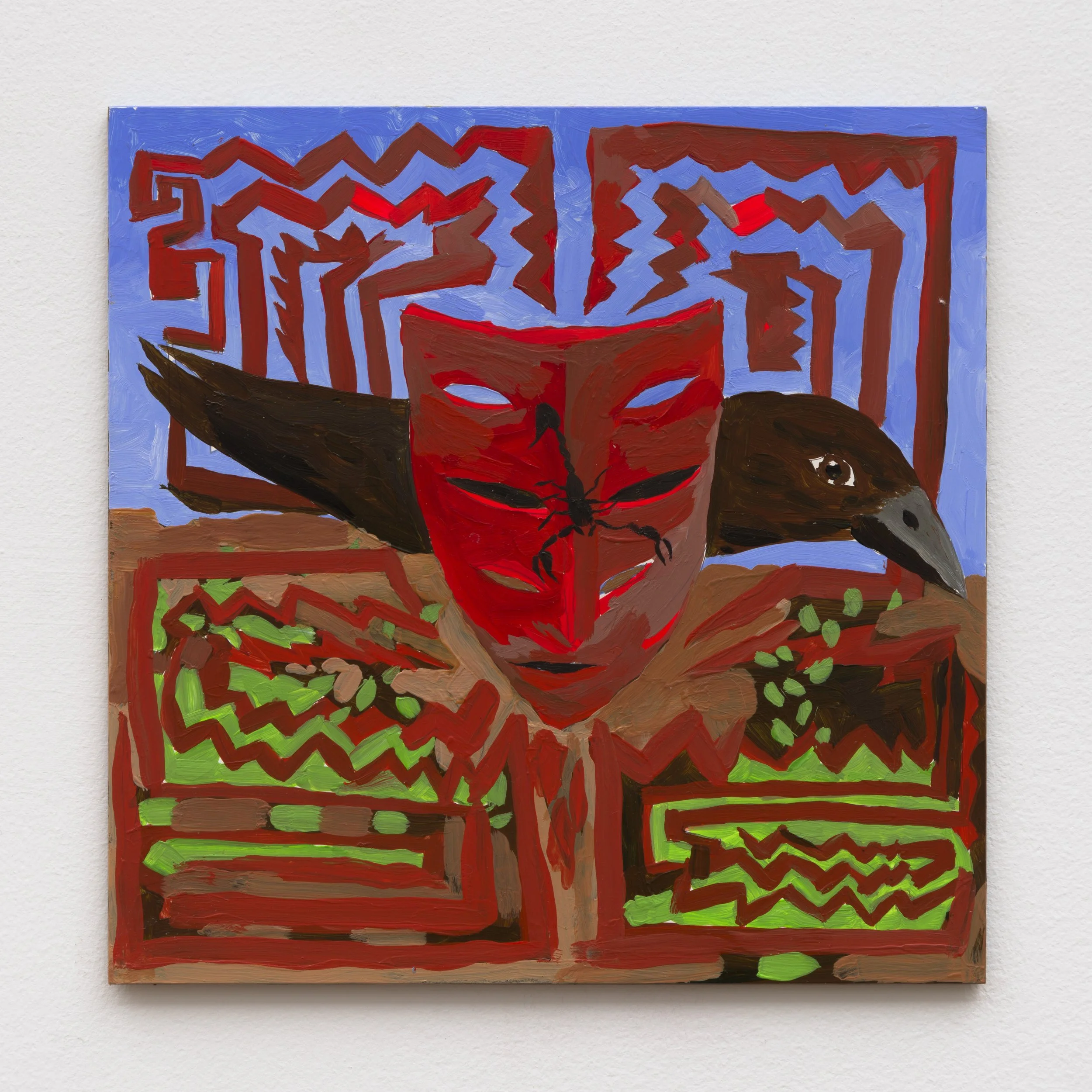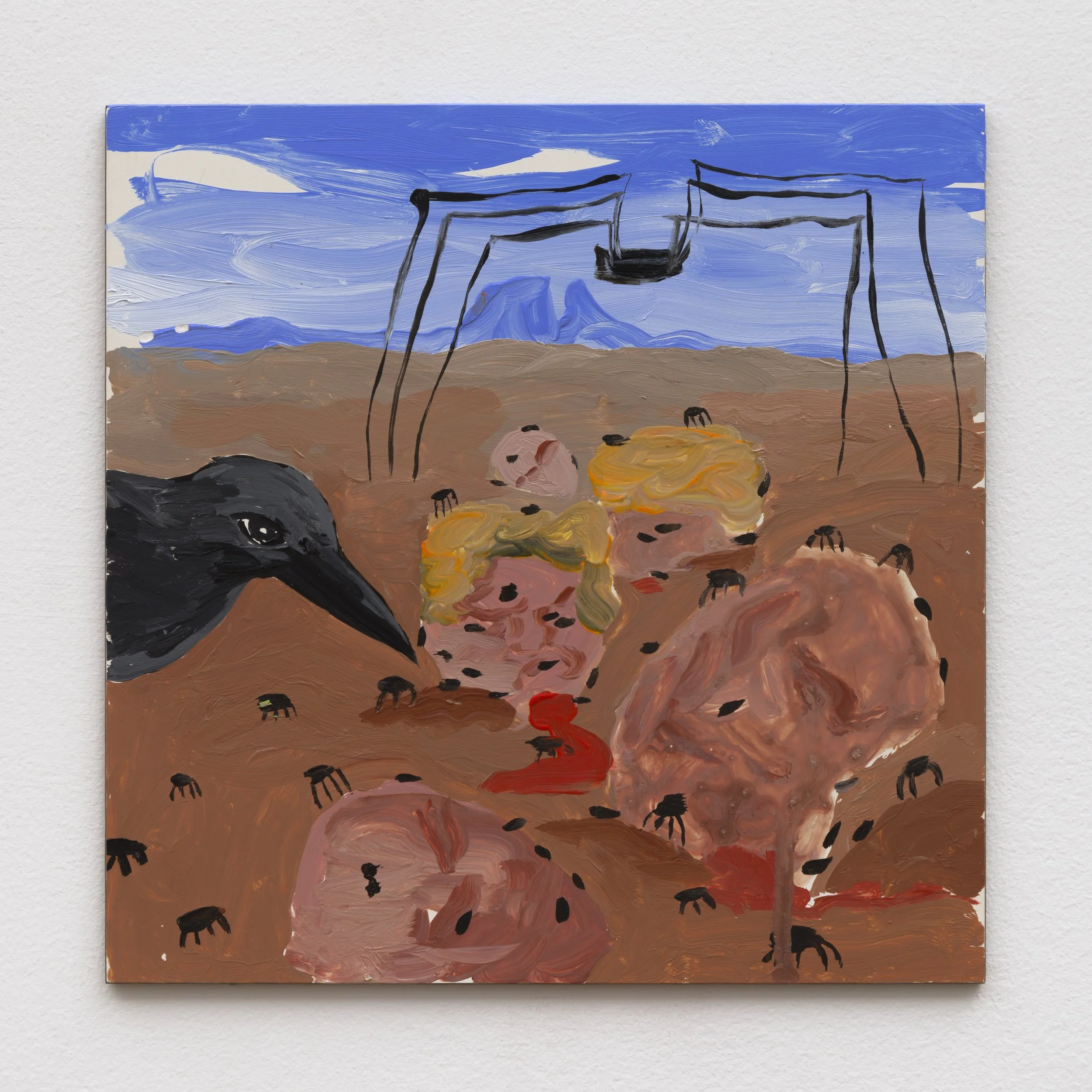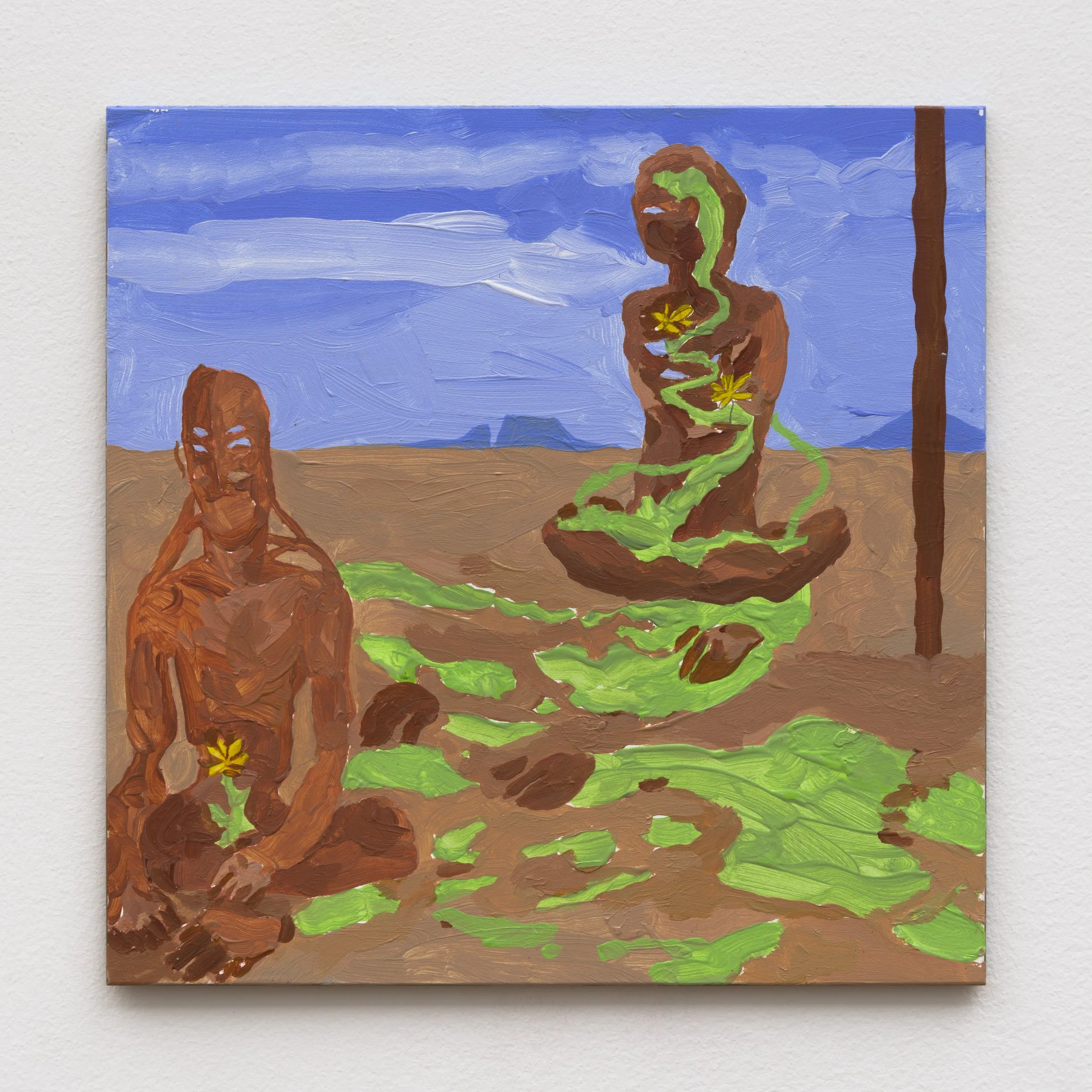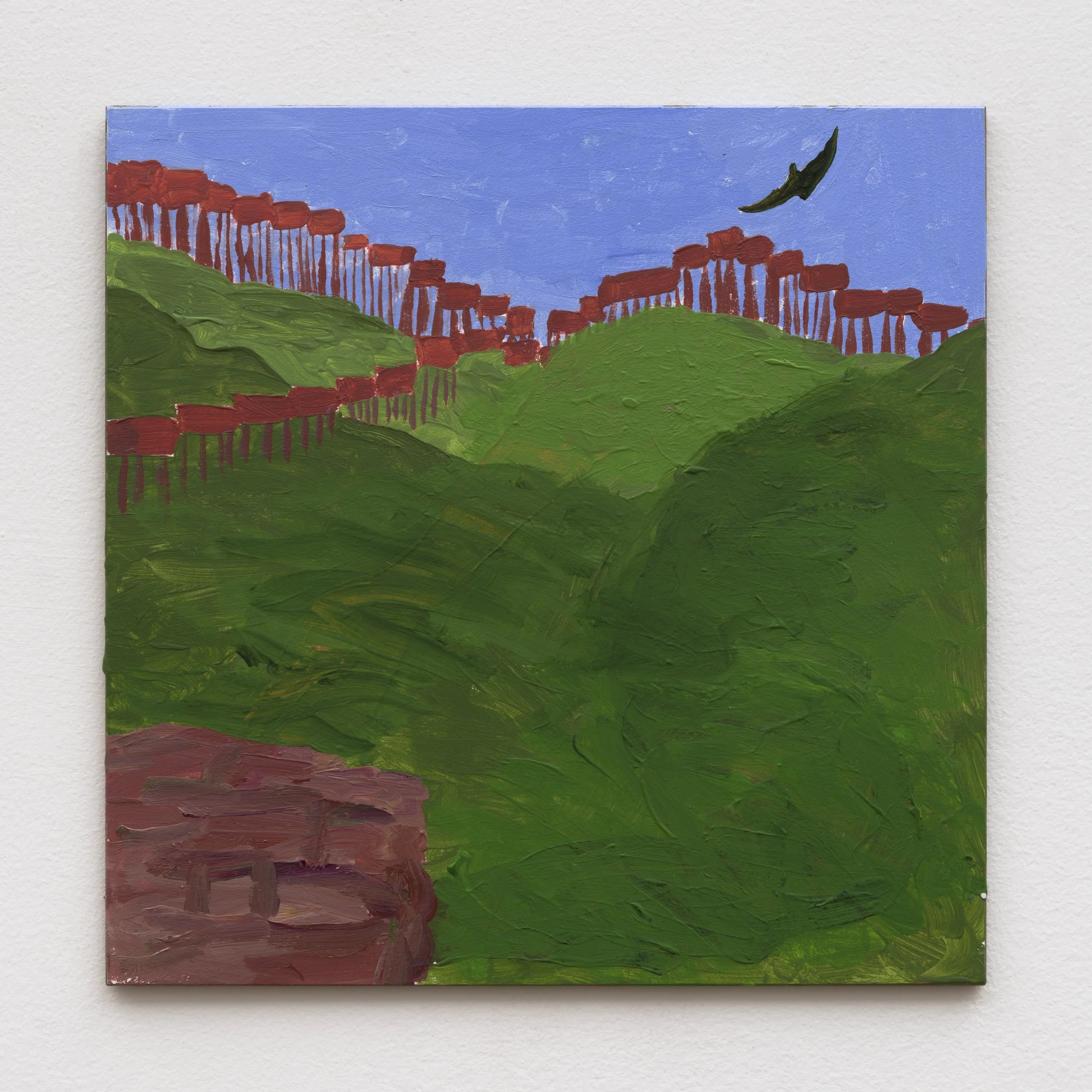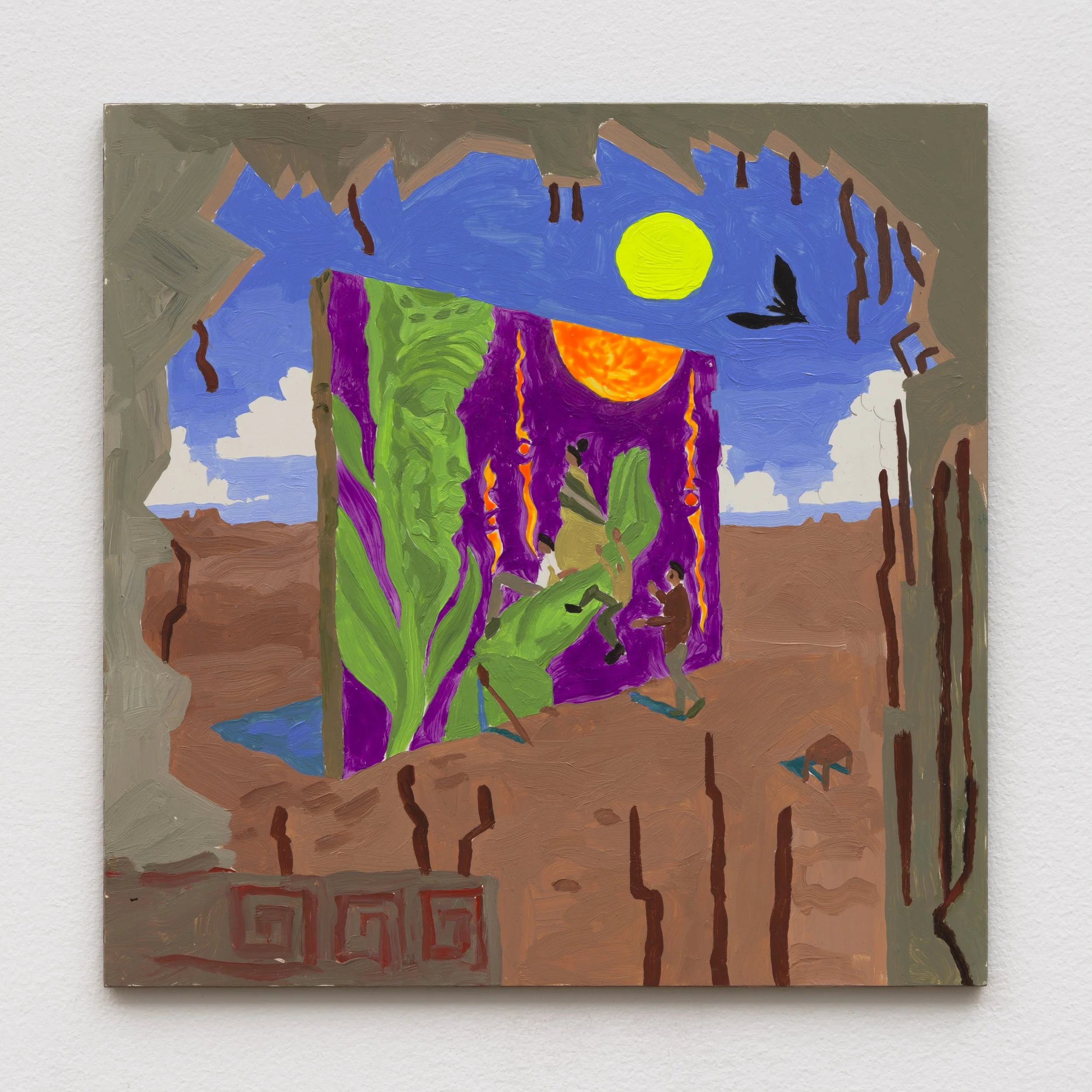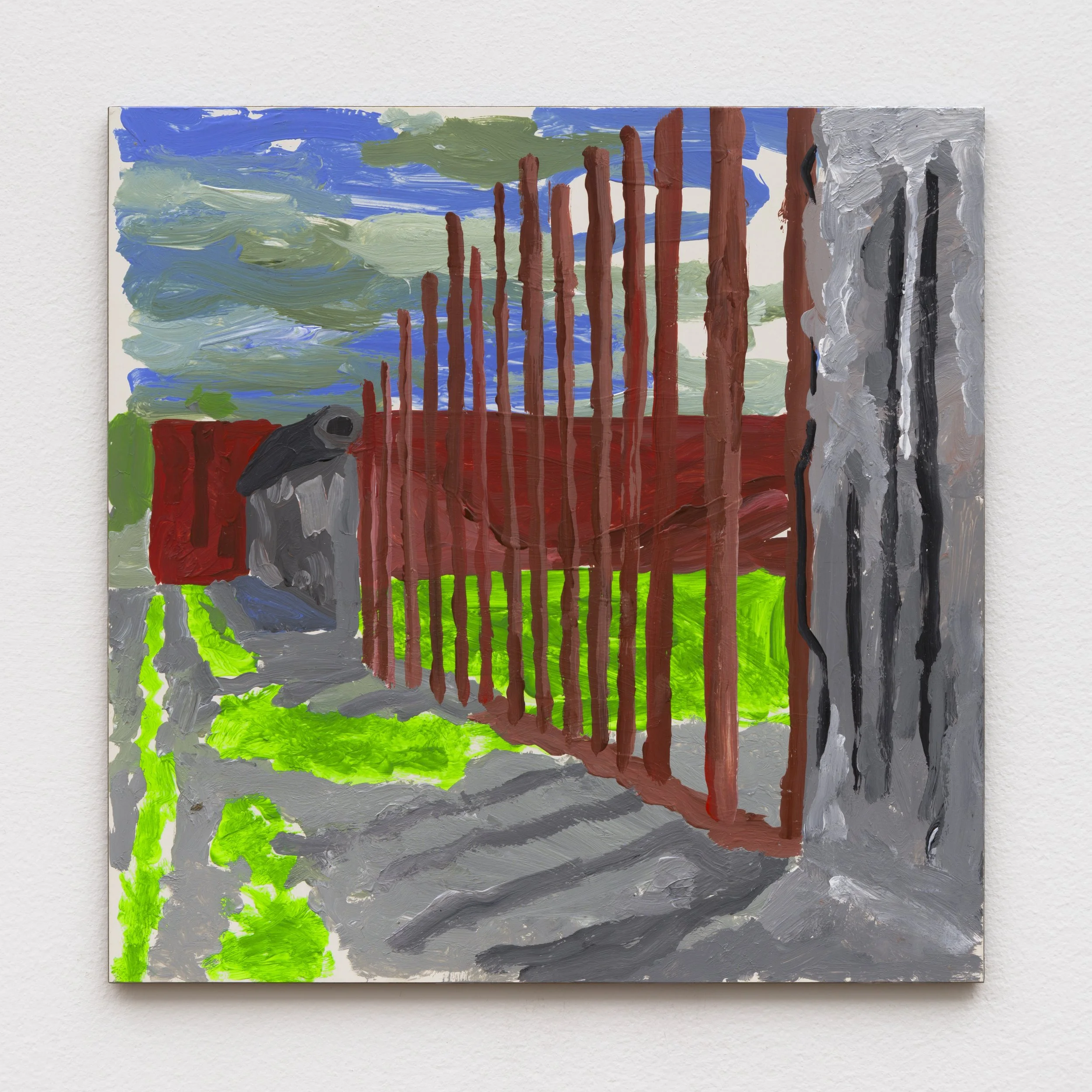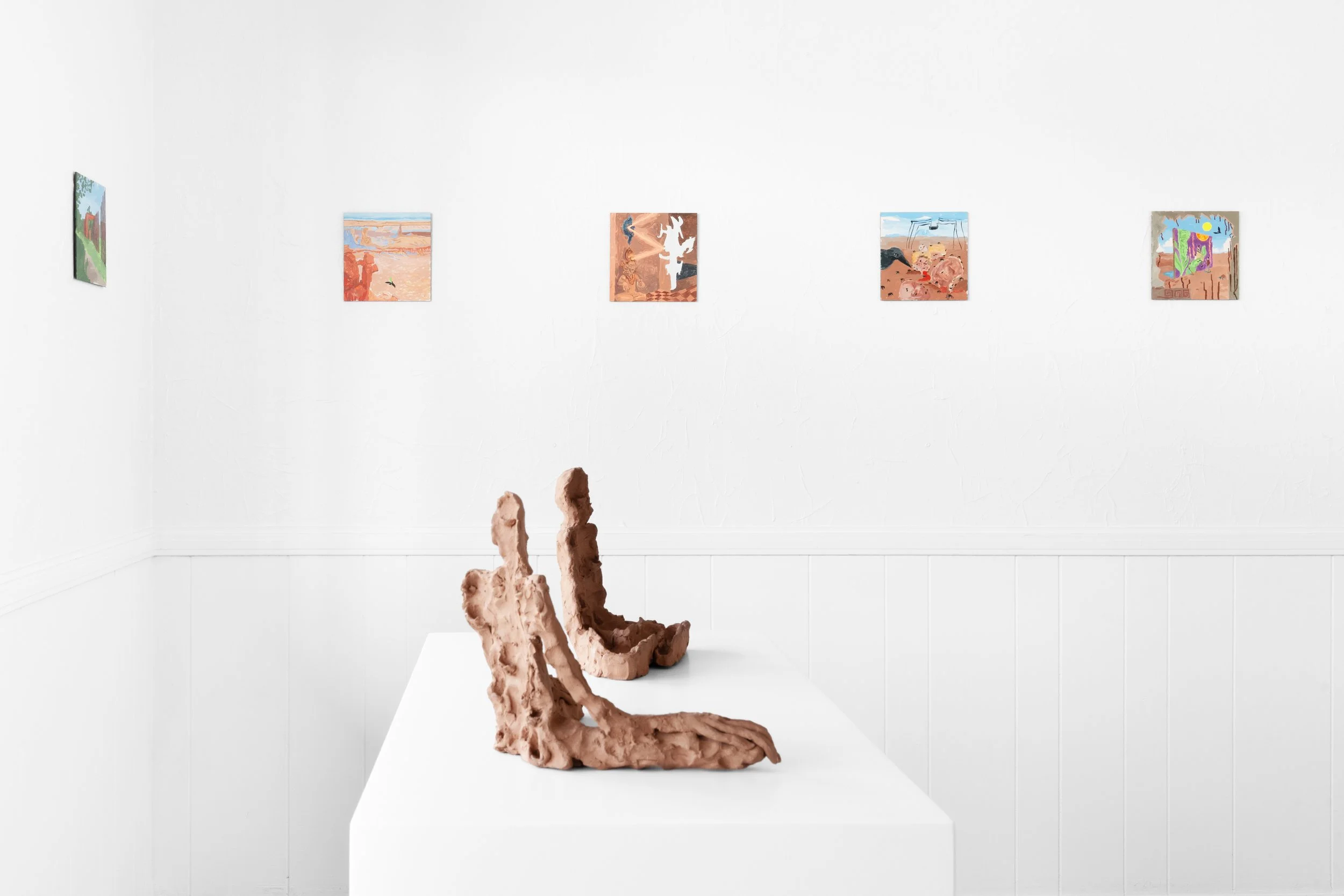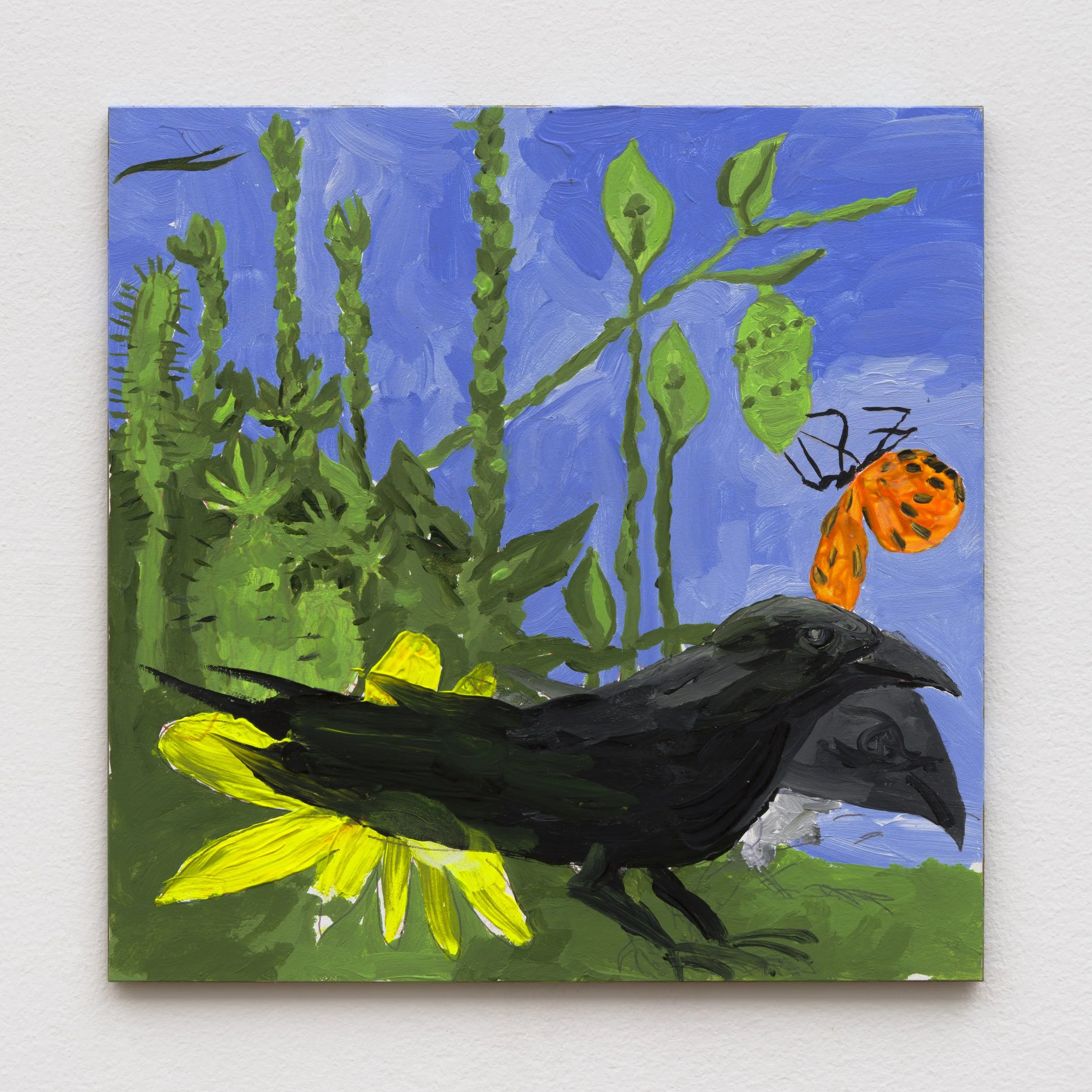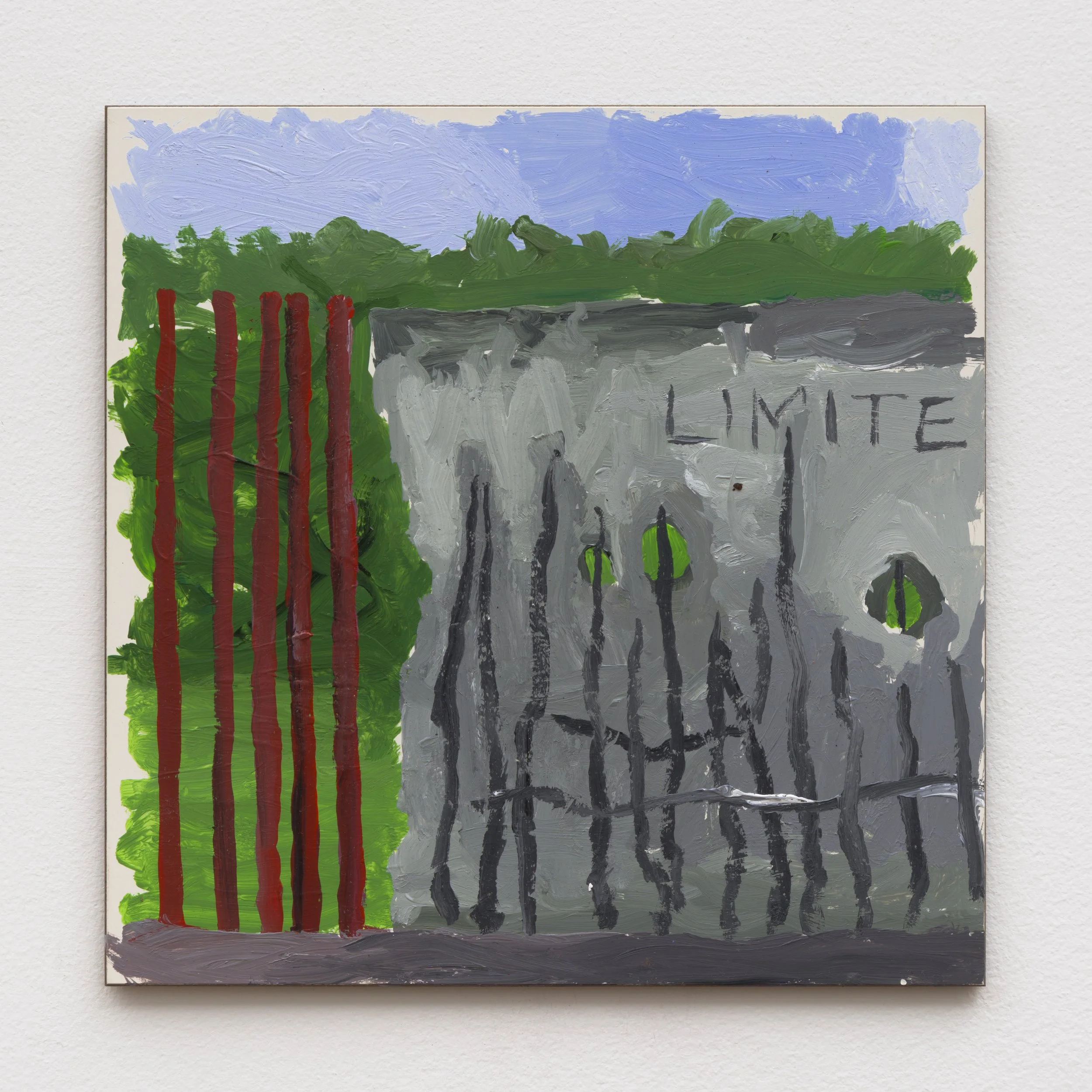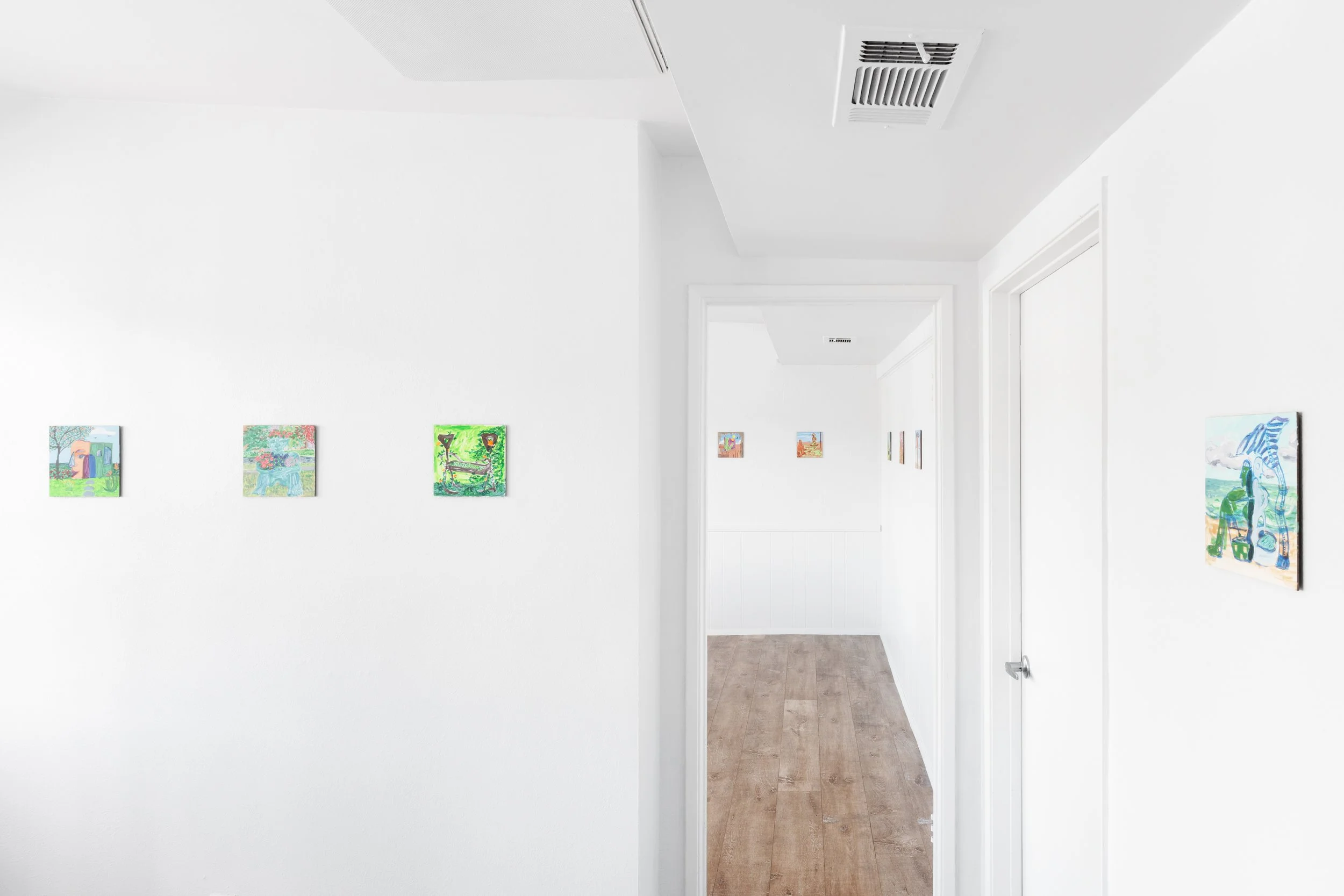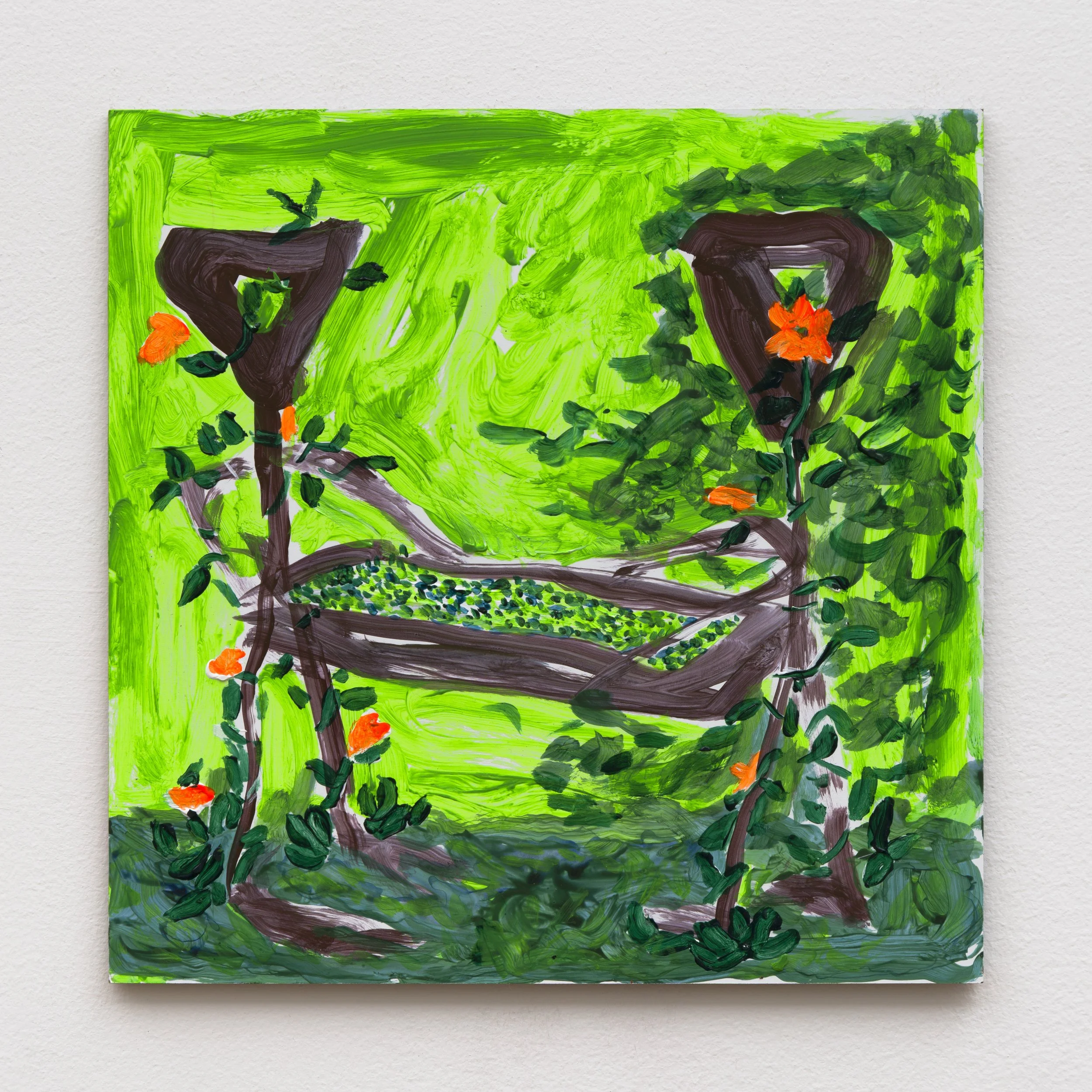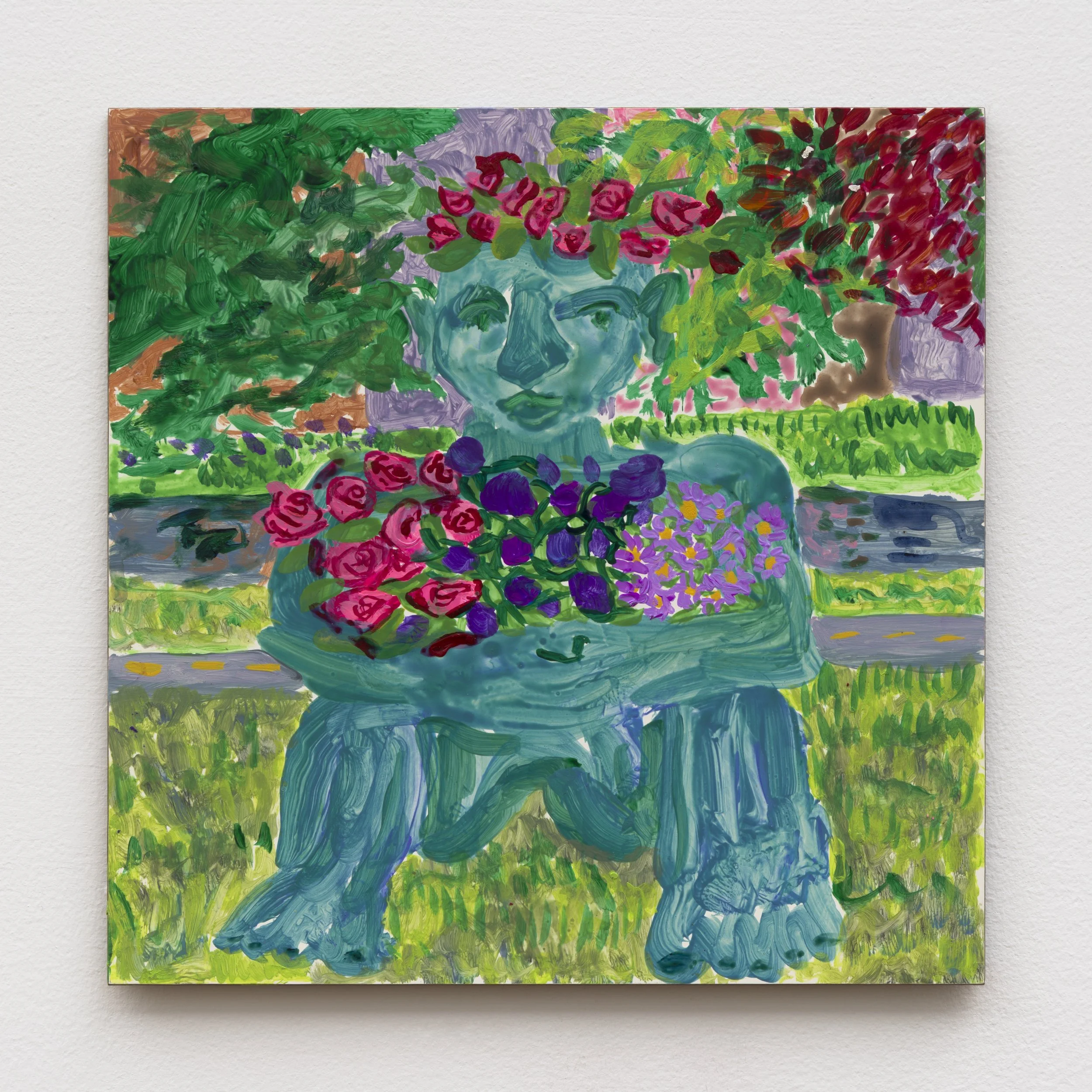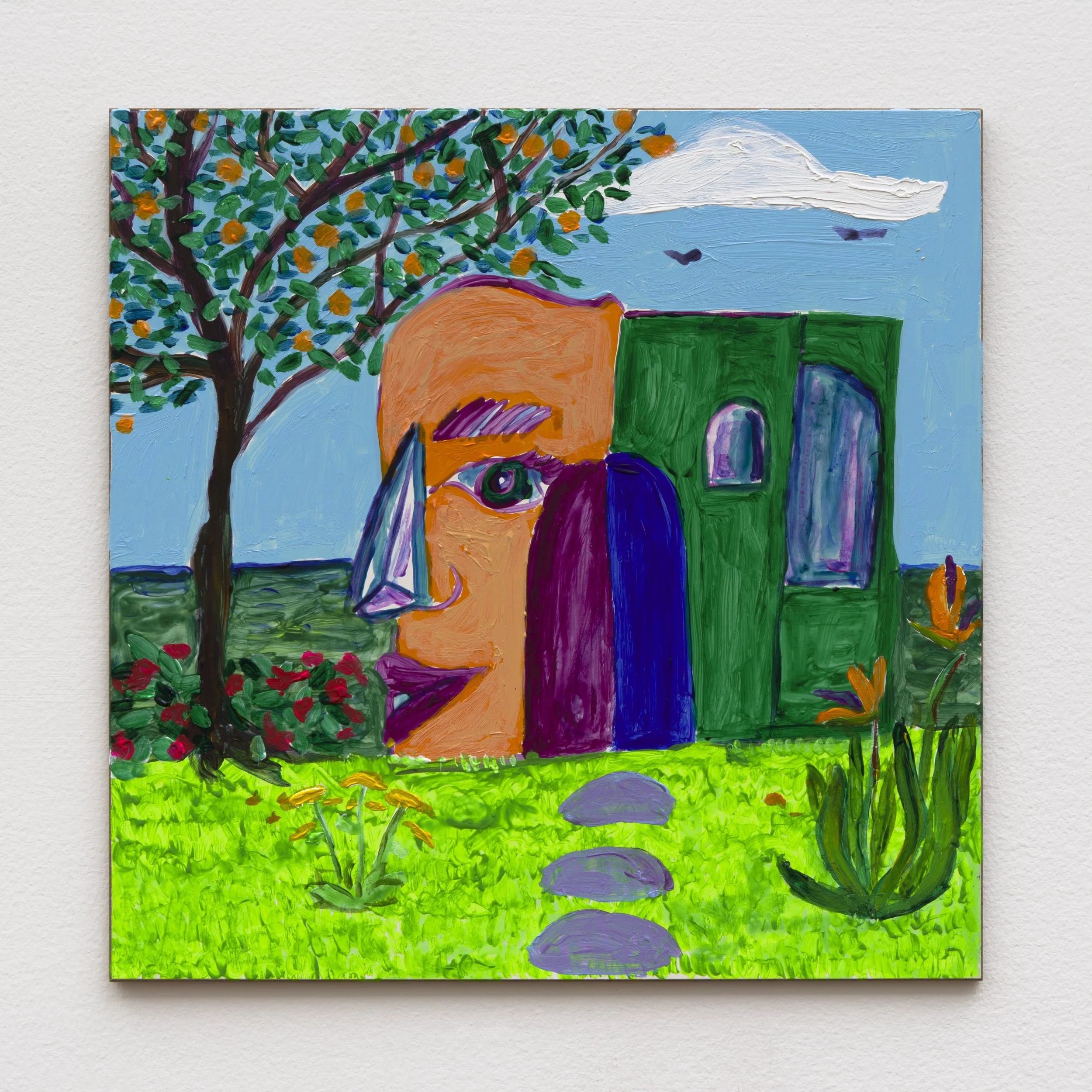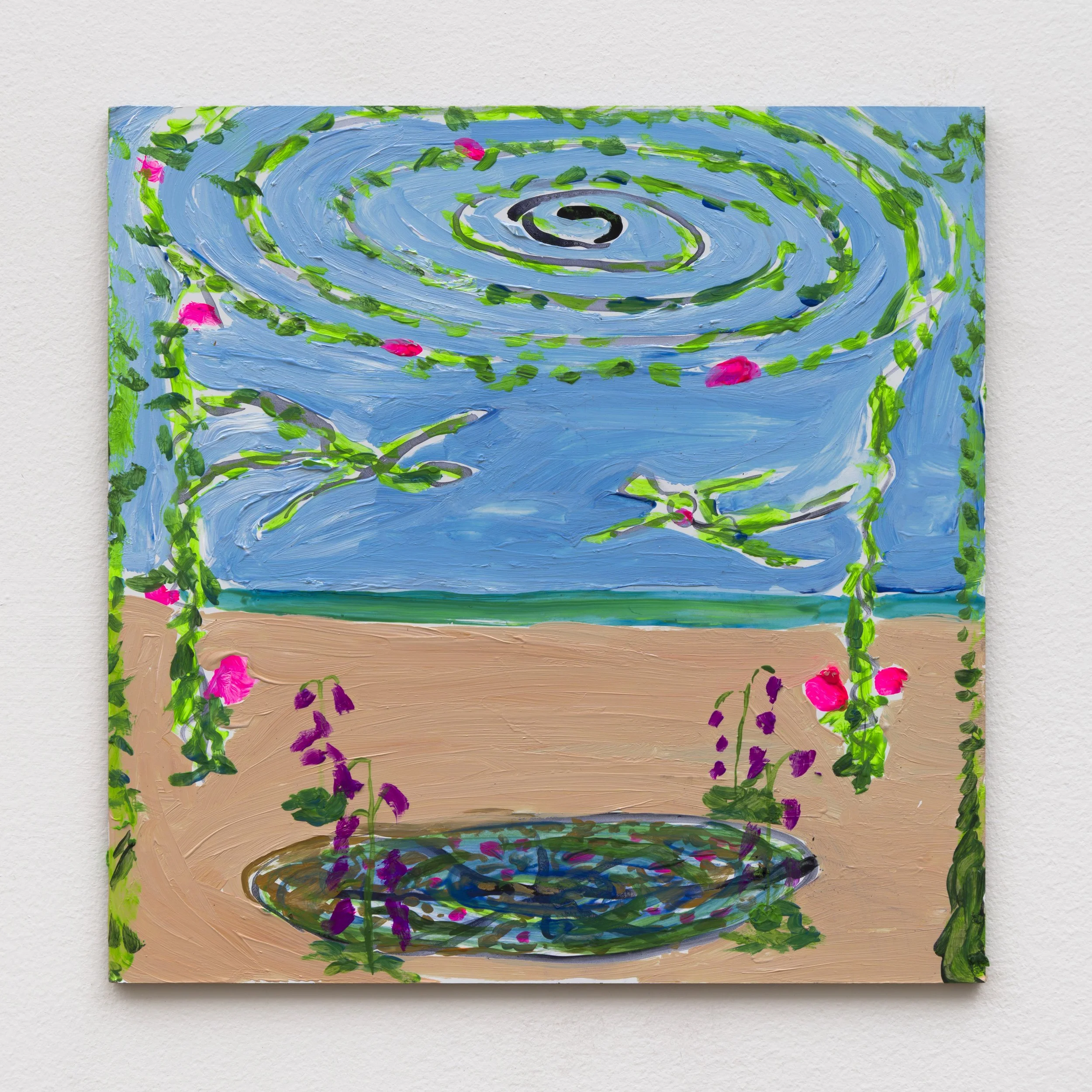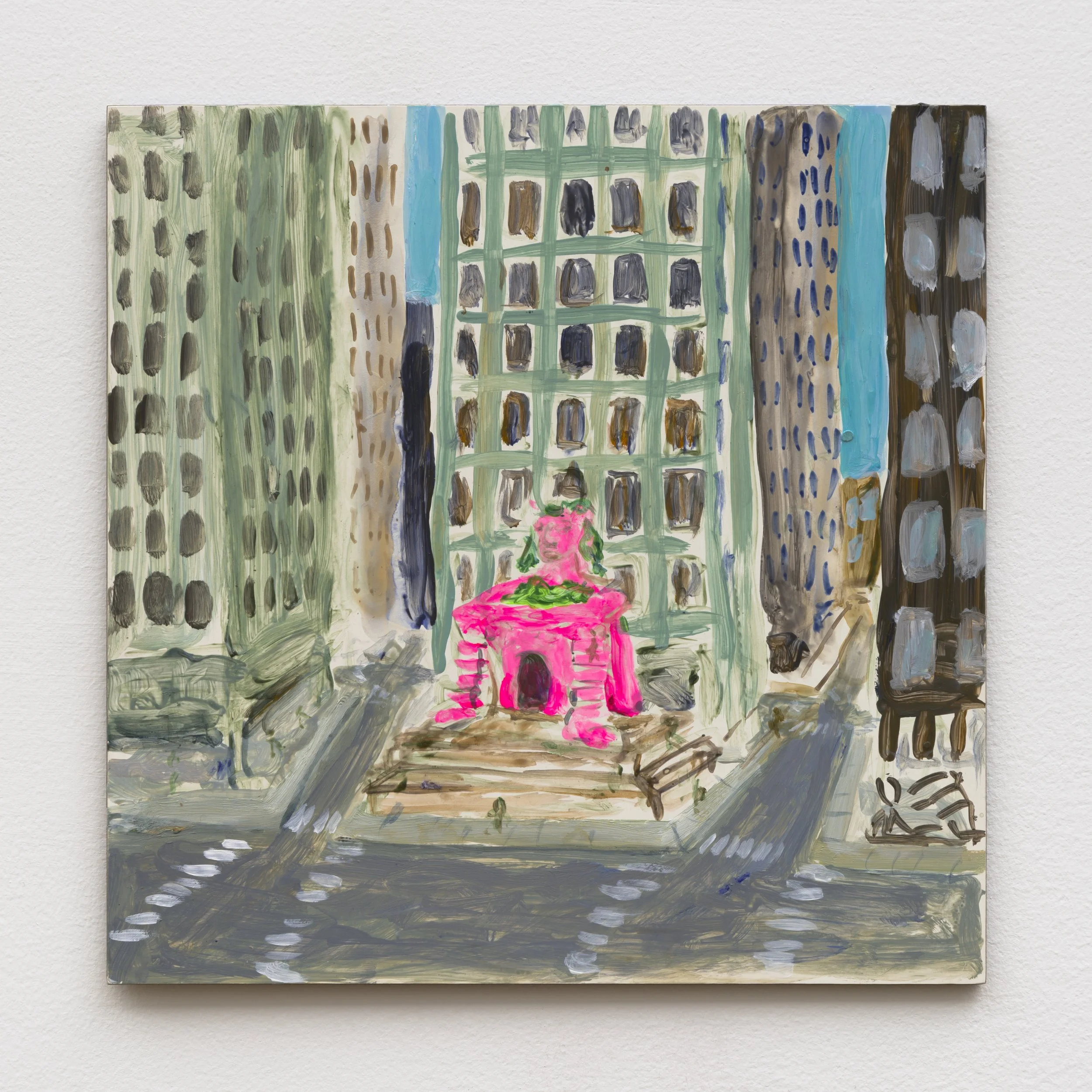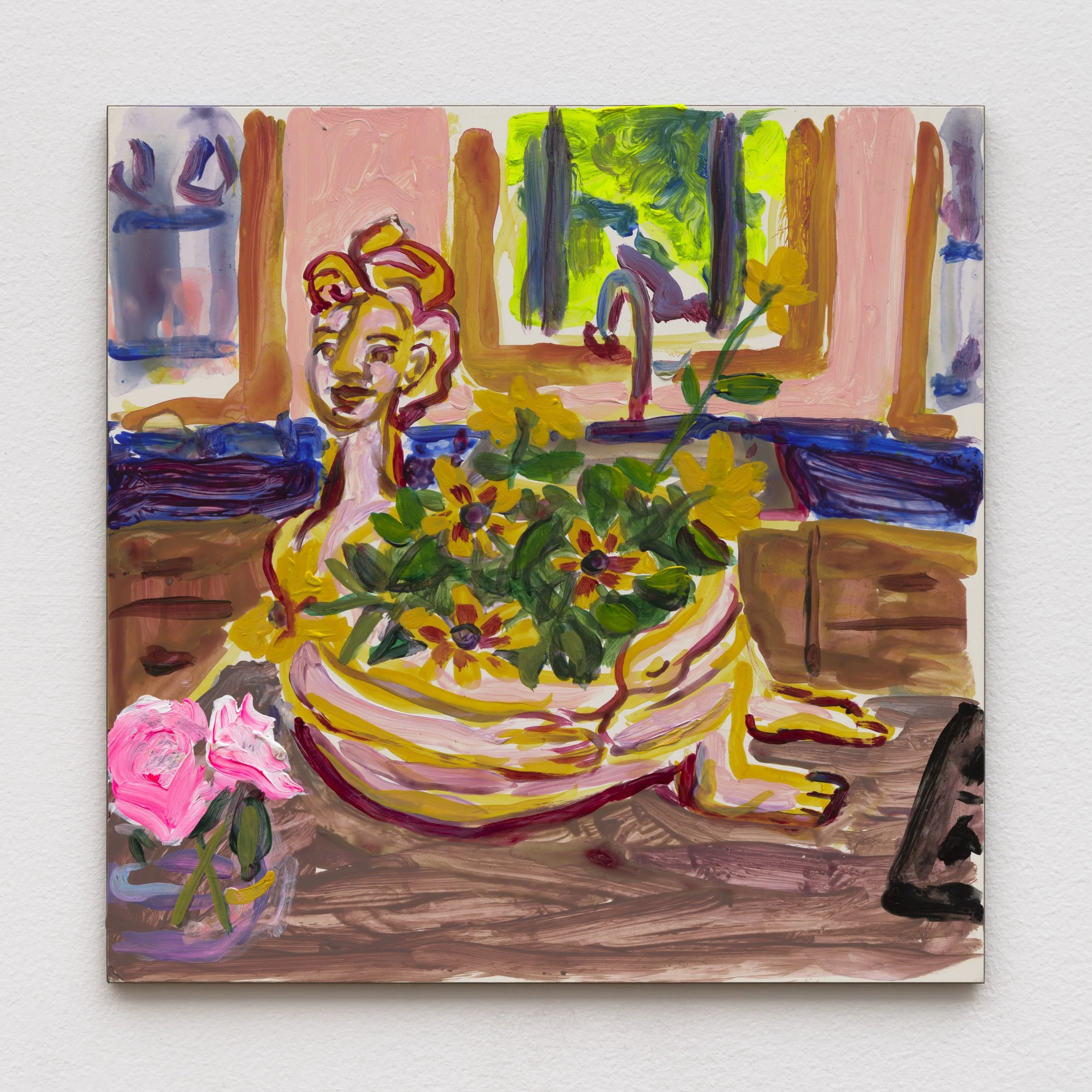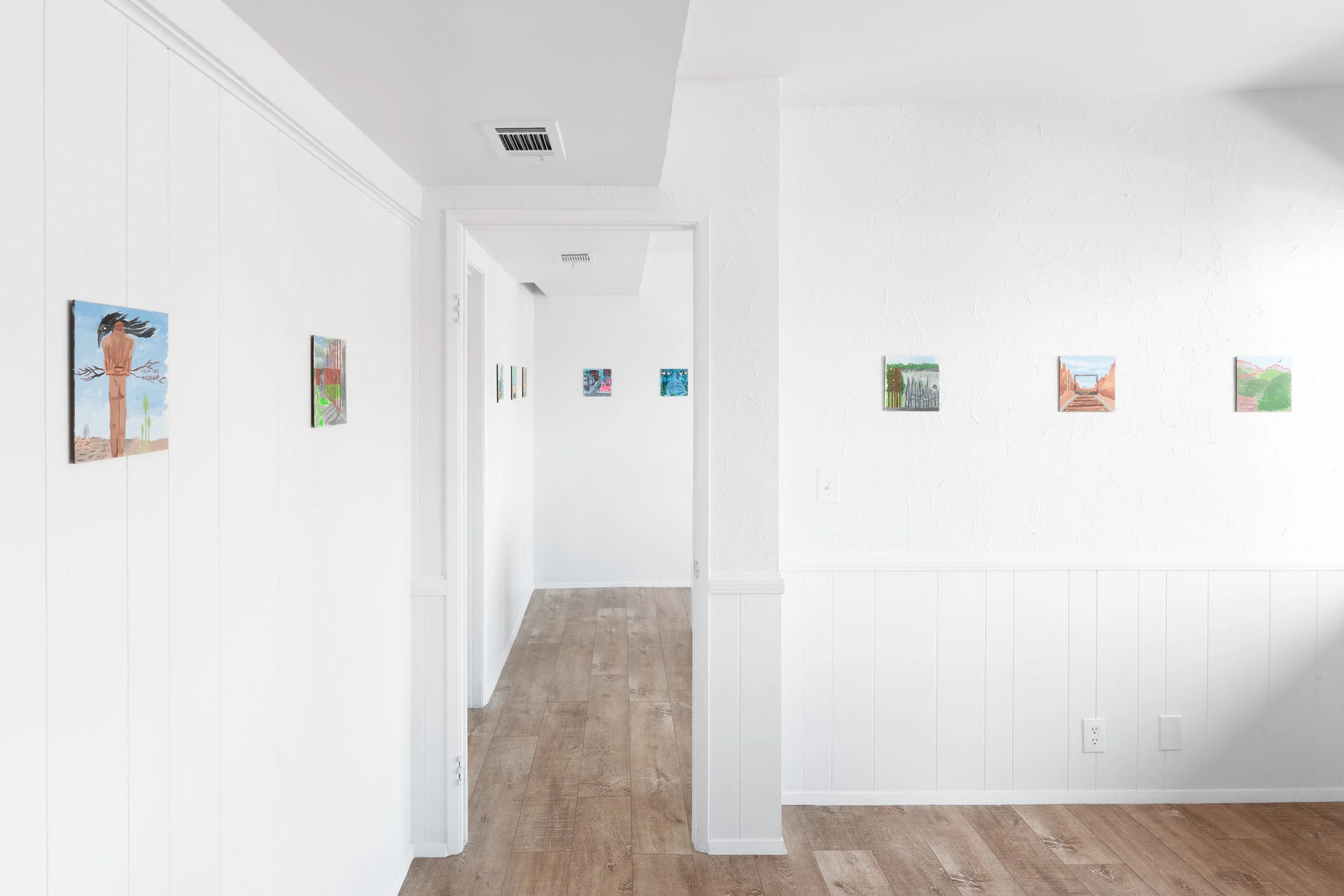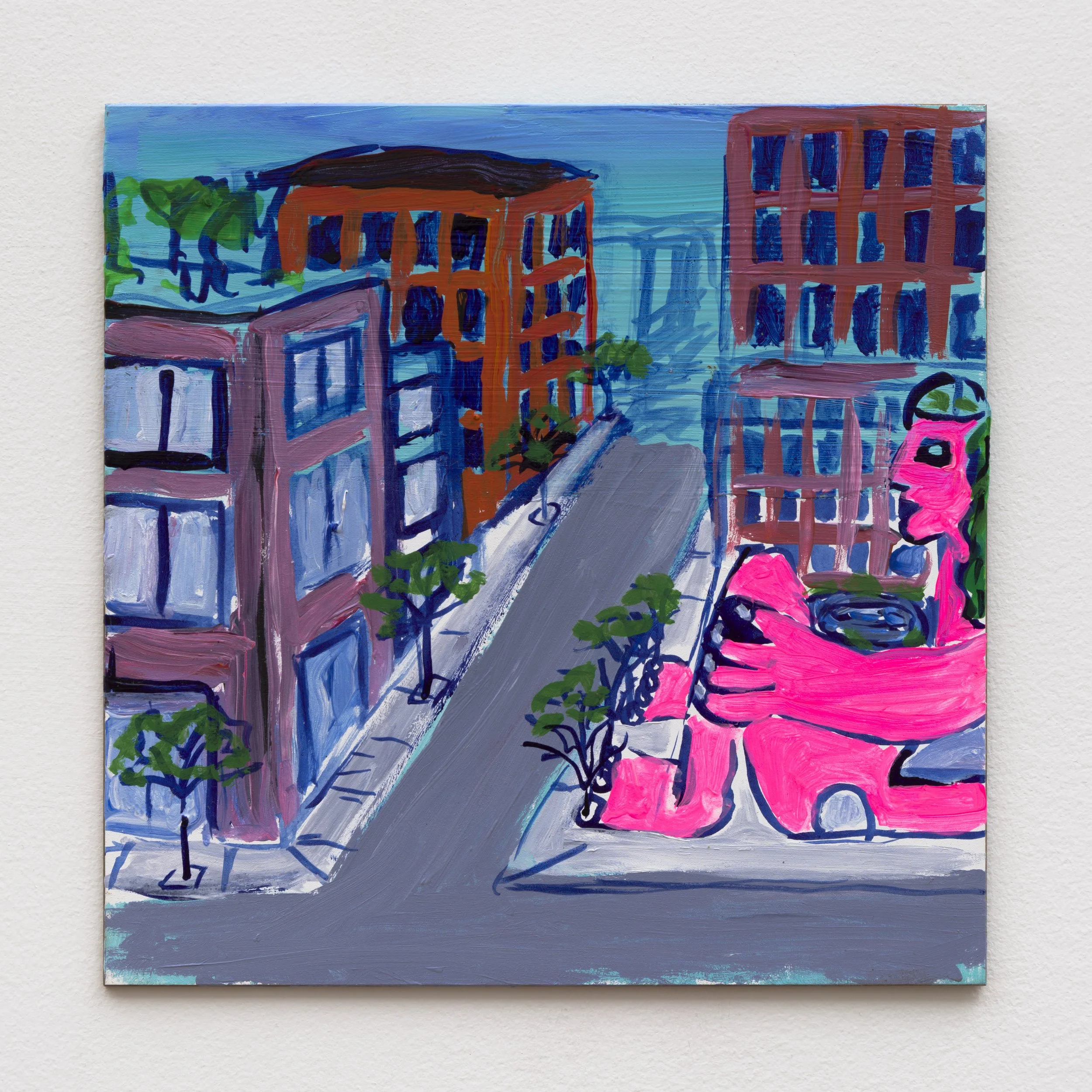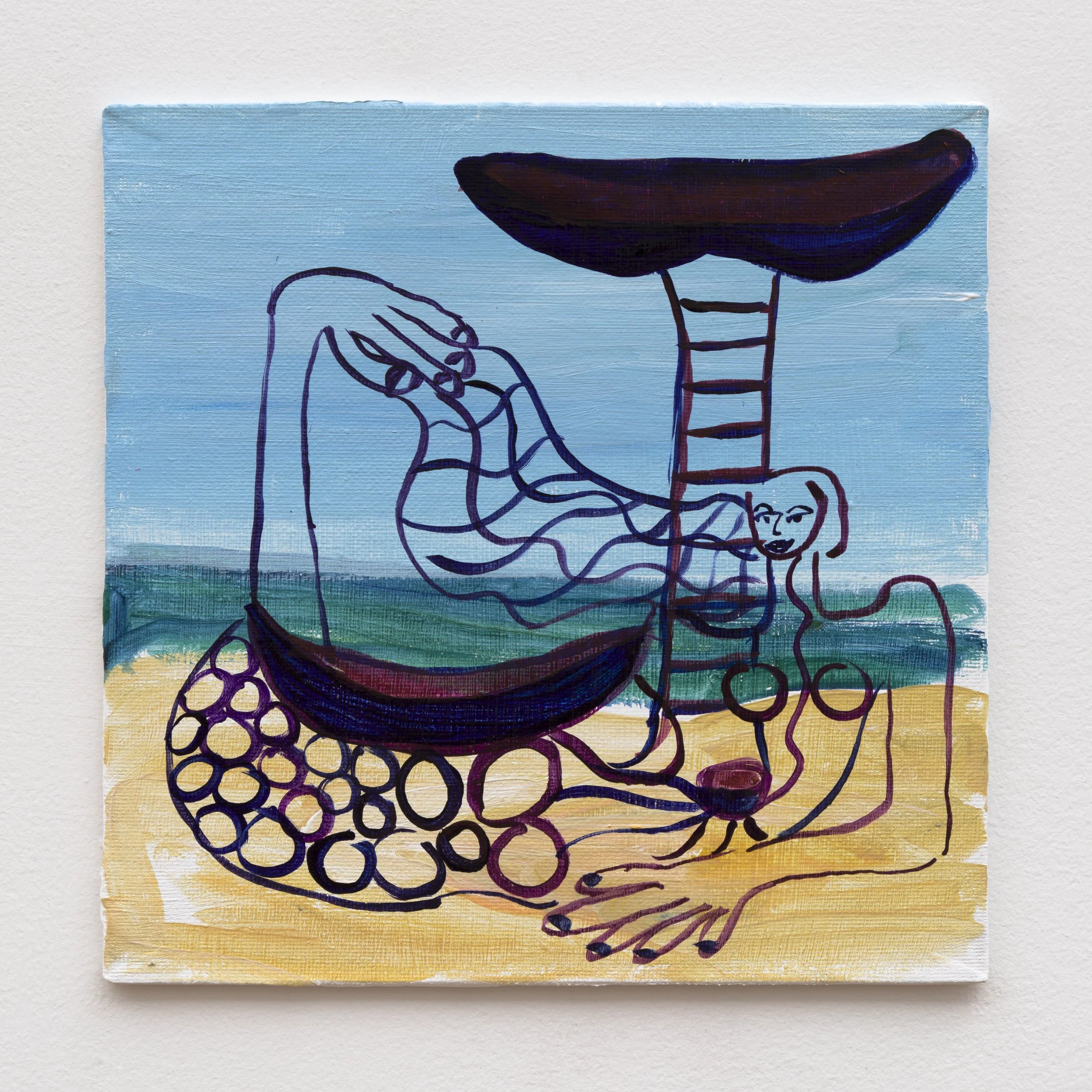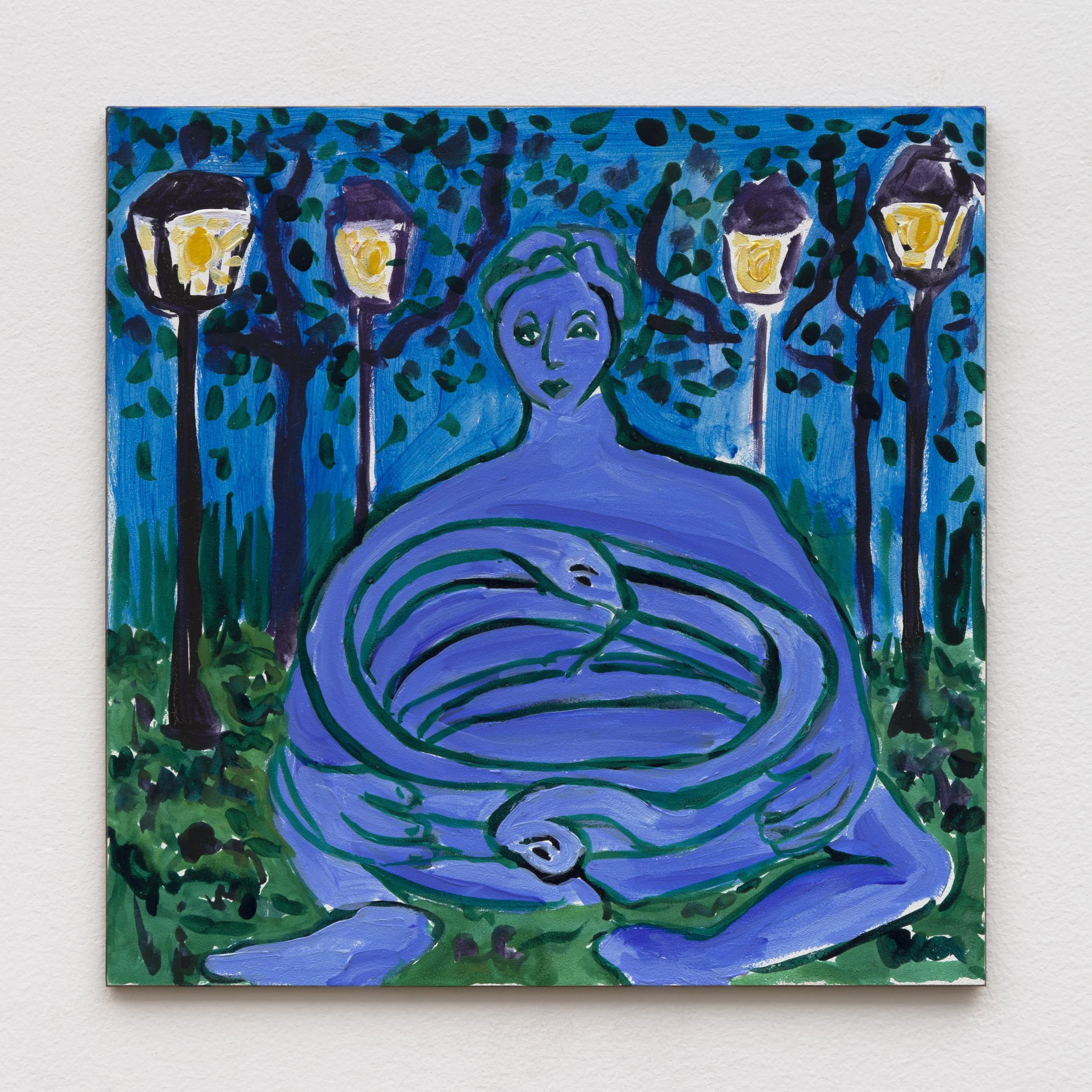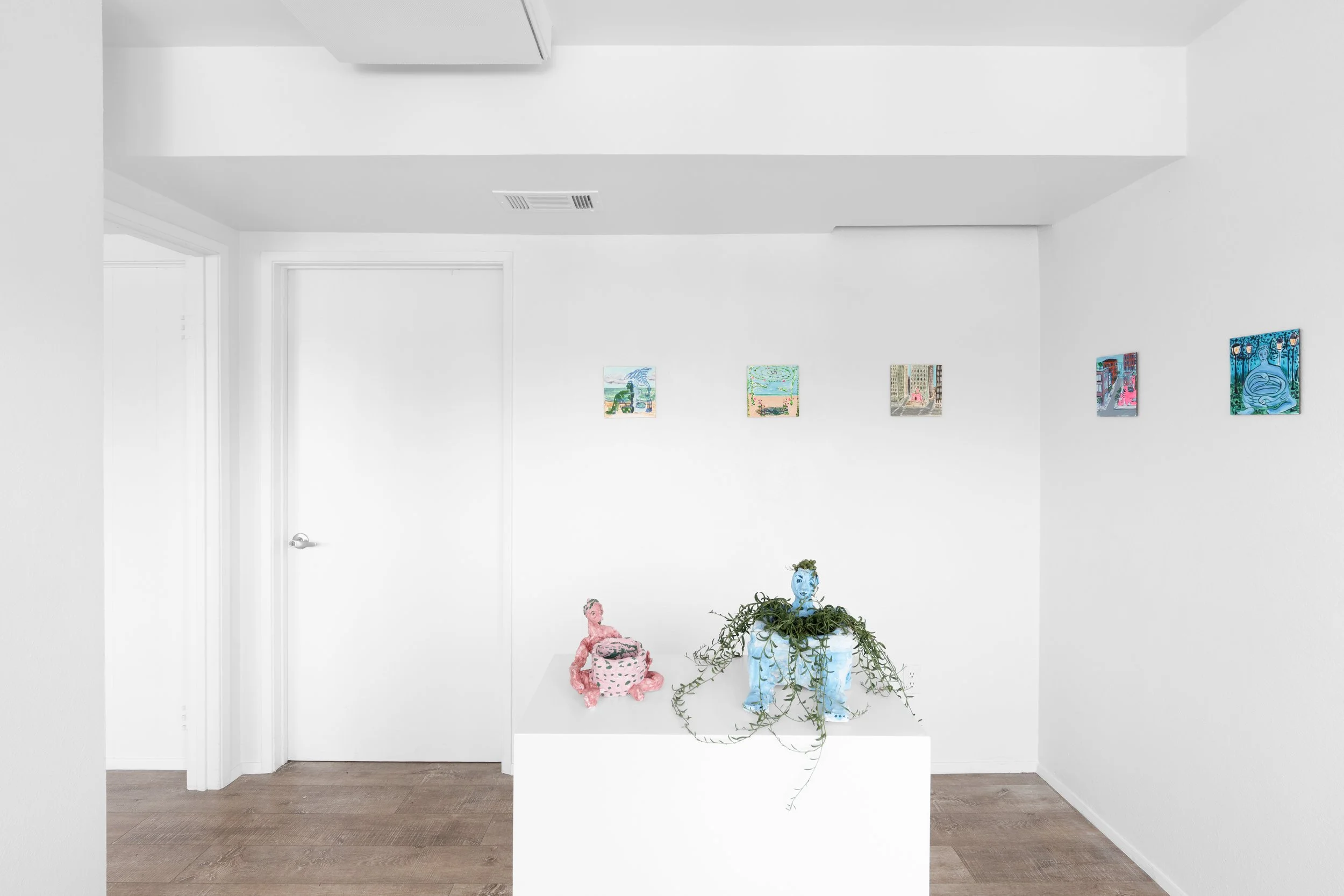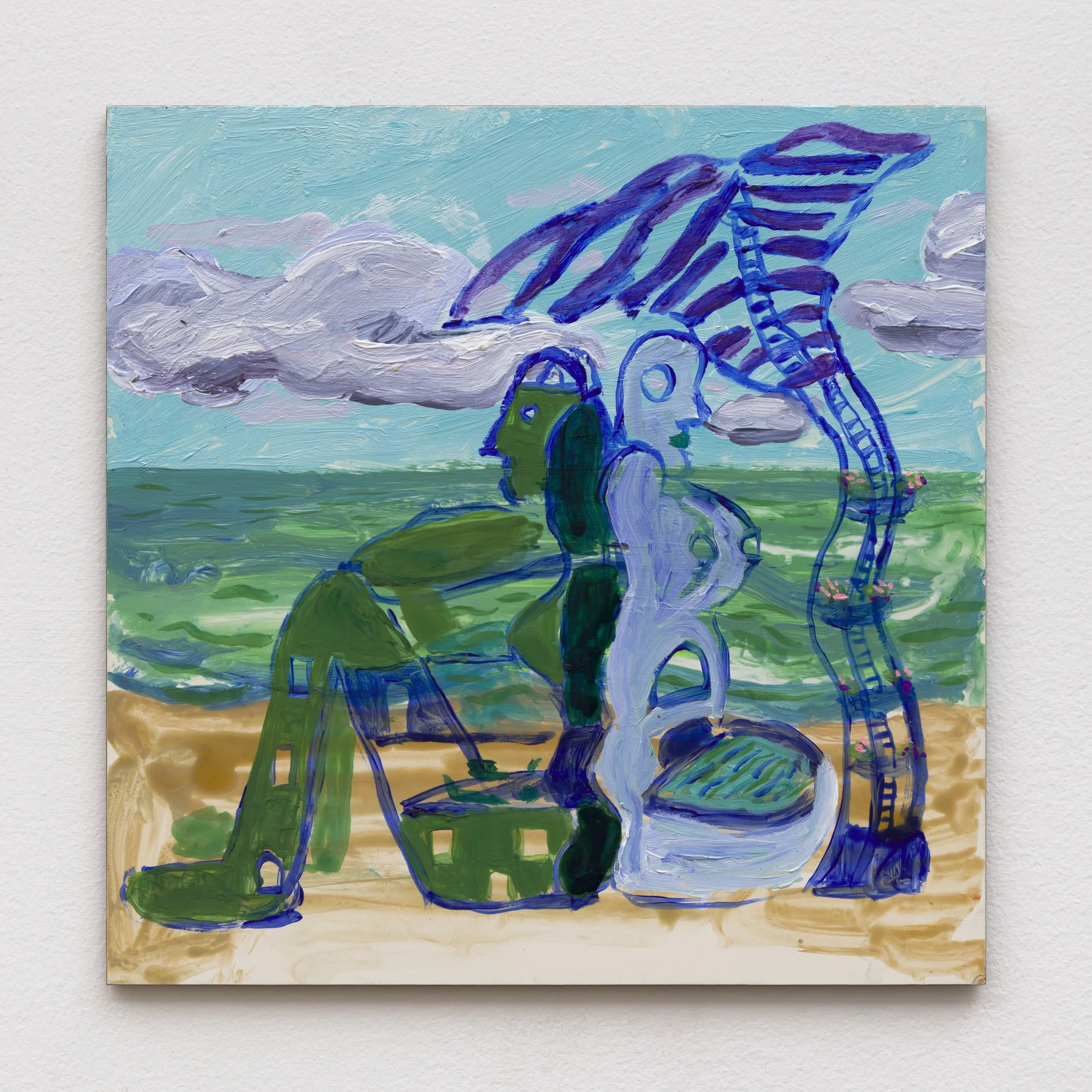Visions for Civic Gardens
Estaban Cabeza de Baca and Heidi Howard
Curated by Lizzie Zelter
August 29 - October 4, 2025
Esteban Cabeza de Baca Desert Passage, 2025 Acrylic on panel 8 x 8 in.
Esteban Cabeza de Baca The Hidden Force, 2025 Acrylic on panel 8 x 8 in.
Esteban Cabeza de Baca After the Border, 2025 Acrylic on panel 8 x 8 in.
Esteban Cabeza de Baca Fake News, 2025 Acrylic on panel 8 x 8 in.
Esteban Cabeza de Baca I Miss My Blood, 2025 Acrylic on panel 8 x 8 in.
Esteban Cabeza de Baca Triple Alliance, 2025 Acrylic on panel 8 x 8 in.
Estaban Cabeza de Baca Host Figurine I and II, 2022 Terracotta 10 x 10 x 10 in.
Esteban Cabeza de Baca Crow, Spiders, Ants, 2025 Acrylic on panel 8 x 8 in.
Esteban Cabeza de Baca Host, 2025 Acrylic on panel 8 x 8 in.
Esteban Cabeza de Baca Windfall, 2025 Acrylic on panel 8 x 8 in.
Esteban Cabeza de Baca Portal, 2025 Acrylic on panel 8 x 8 in.
Esteban Cabeza de Baca Breach, 2025 Acrylic on panel 8 x 8 in.
Installation view
Esteban Cabeza de Baca New Ecologies, 2025 Acrylic on panel 8 x 8 in.
Esteban Cabeza de Baca Limite, 2025 Acrylic on panel 8 x 8 in.
Installation view
Heidi Howard Palmheads Holding Seedlings, 2025 Acrylic on panel 8 x 8 in.
Heidi Howard Public Restroom, Berlin, 2025 Acrylic on panel 8 x 8 in.
Heidi Howard A House on a Hill, 2025 Acrylic on panel 8 x 8 in.
Heidi Howard Hydroponic Dream, 2025 Acrylic on panel 8 x 8 in.
Heidi Howard New Public Restroom Template, 2025 Acrylic on panel 8 x 8 in.
Heidi Howard Pink Person, 2022 Ceramic 7 x 8 x 7 in.
Heidi Howard Big Kitchen Garden, 2025 Acrylic on panel 8 x 8 in.
Installation view
Heidi Howard Astoria House, 2025 Acrylic on panel 8 x 8 in.
Heidi Howard Beach Sculpture Without Plant, 2025 Acrylic on panel 8 x 8 in.
Heidi Howard Blue, 2022 Ceramic and plants 9 x 10 x 9 in.
Heidi Howard Park Goddess, 2025 Acrylic on panel 8 x 8 in.
Installation view
Heidi Howard Mer Palace, 2025 Acrylic on panel 8 x 8 in.
Two Rooms is proud to present Visions for Civic Gardens, a two-person exhibition featuring Esteban Cabeza de Baca (b. 1985, San Ysidro, CA) and Heidi Howard (b. 1986, Queens, NY). Expanding upon the traditions of landscape painting and figuration, Cabeza de Baca and Howard depict unconventional representations of places and bodies. Across a unified format of 8 by 8-inch painted panels and small figurative sculptures, they articulate visions for San Diego’s future in their own pictorial language. The paintings in Visions for Civic Gardens, all made in 2025, showcase the liberatory potential of this region’s deserts, borderlands, beaches, parks, and urban centers.
Working both in their shared studio and directly within the natural environments they depict, the artists center collaborative and ecological approaches to art making. They have been creating alongside one another for over a decade after meeting in 2012 at Columbia University’s MFA program. Since then, the two have drawn heavily from artistic influences in New York, as well as frequent visits to the American Southwest. They recently traveled to Berlin, Germany where they observed remains of the Berlin Wall up close.
Growing up in San Ysidro with Mexican and Native American heritage, Cabeza de Baca was heavily influenced by the proximity of the US-Mexico border. Exploring the physical and symbolic presence of the wall, Cabeza de Baca’s compositions often defy spatial cohesion. Landscape and architecture often blend into one another, confounding Cartesian single-point perspective. His process incorporates plein-air painting with broad range of experimental painterly techniques. His mark making is confident, quick, and soft, producing forms that have a lightness to them, even when portraying concrete, rebar, and sedimentary rock.
His work for Visions for Civic Gardens evokes vast time scales with magical moments between a powerful landscape and its varied inhabitants. Some works, such as Fake News and Windfall remain contemporary and grounded, while others such as The Hidden Force and Triple Alliance evoke ancient and spiritual realms. Mythological figures and spirits allow us to see ordinary creatures like the crow and bright green leaves as supernatural presences. Many of his compositions include portals, zones cracked open with potential. Breakage exists across several pieces expressed as a headless torso, abandoned body parts, and split rebar. Host, in painted and sculptural form as Host Figurine, depicts a single organism separated into two.
In both Cabeza de Baca and Howard’s work, there is a circular conversation between their paintings and sculptures, as if one has seemingly materialized out of the other. Park Goddess presents a human head intertwined with a coiled snake – a form that is materially echoed in Pink Person, the ceramic coil pot. Howard portrays femme bodies hugging and containing nature, enmeshed in the settings they grow out of. At times there is a physicality and heft to the figures, while others appear translucent and meld into their backdrops.
Howard’s paintings present speculative infrastructures that include outdoor activations, public restrooms, communal living spaces, and plant houses. Many works are influenced by Niki de Saint Phalle’s sculpture parks and her ethos as a feminist, activist, and collaborator with her partner, Jean Tinguely. Like de Saint Phalle’s Hon, Howard creates a surreal relationship between life-sized bodies and figurative architecture. In Astoria House, a pink seated figure the height of a three-story building includes a door cutout on the leg. Blue in Midtown and New Public Restroom Template present seated bodies in urban plazas surrounded by stick figure pedestrians and high-rise buildings. Hydroponic Dream conjures a more unfamiliar realm, wherein an angelic swirl emerges out of a reflective pond.
Rather than aiming for physical likeness, Howard channels spirits into bright colors and wild patterns. She connects with sitters through shared memories, conversations, and ideas. Howard then lets these conjured perceptions and associations guide her paintings. Her process reflects her experience growing up discussing the world with her father, the sound artist Earl Howard, who was born blind, articulating impressions and observations beyond sight. In Visions for Civic Gardens, Cabeza de Baca and Howard propose a borderless city where humans and plants coexist and flourish. Understanding gardens as settings of growth and nourishment, the artists explore the potential of shared resources and civic possibility.

